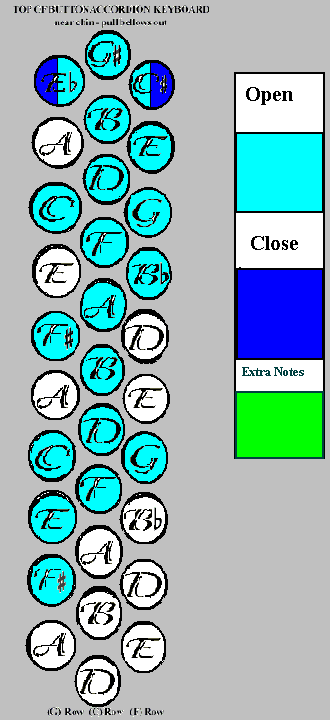 |
Eventually you will discover that there are many passages that use the chromatic scale and will want to be proficient
and smooth when you play this scale.
What is a chromatic scale? If we were playing a piano, we would play all the
keys, (black and white) between C and C.
This would be the Chromatic Scale starting on C:
C C#/Db D
D#/Eb E F F#/Gb G G#/Ab A A#/Bb B C
In the following Diagram we play:
G3,
(G1), C3, G1, F2 or G4, C4, G5, F3, C1, C5, F4, C6, G7

At this point we can continue to the second octave using the F1 button for C# and D#. The chromatic scale is only
complete in the first octave.
|
 |
|
|
 |
 |
|
 |
 |
 |
|
 |
 |
|